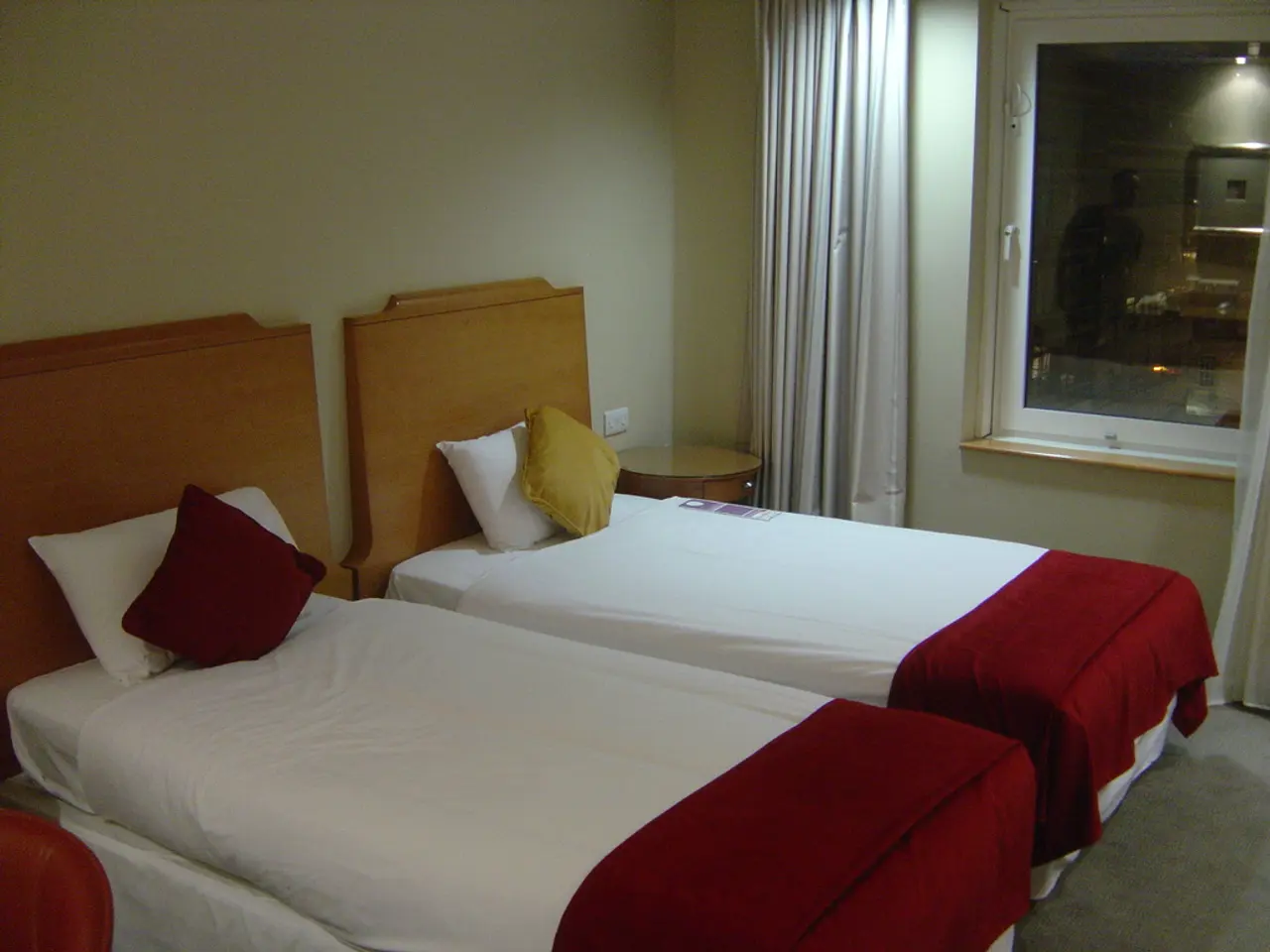Alter Home Ventilation through Curtain, Furniture, and Room Arrangement Adjustments
=====================================================================
Interior design plays a significant role in promoting better air quality and circulation within homes. By making strategic choices about furniture placement, materials, and ventilation, homeowners can create a healthier living environment.
Creating open spaces around vents, radiators, and windows is essential for promoting greater air dispersion, increasing circulation, and reducing the demand on HVAC systems. Maintaining at least 10-12 inches of clearance around vents ensures proper airflow and better air dispersion, which helps reduce stale air and lowers the load on heating and cooling systems.
Arranging furniture along walls rather than in the center of the space can help with cross-ventilation, a process that improves house airflow. Keeping large furniture pieces about 6-12 inches from the wall allows air to move behind and around them, further enhancing air circulation.
Curtains and fabrics also impact airflow and air quality. Heavy or synthetic curtains can trap moisture and hinder ventilation, especially in humid conditions, leading to musty odors and stale air. Choosing lightweight, breathable fabrics such as cotton or linen for drapes improves air circulation and helps regulate indoor humidity, preventing dampness and enhancing comfort. Additionally, selecting low-VOC or VOC-free materials for curtains and other furnishings reduces indoor air pollution from harmful chemical emissions, contributing to healthier air quality.
Open layouts with minimal obstruction can significantly enhance air velocity and dispersion. Good circulation enhances indoor air quality, regulates humidity, and reduces allergens and dust. Opening windows on opposing sides of a room or residence generates a natural cross-breeze, improving ventilation and comfort. However, curtains should be positioned to enhance rather than block airflow, avoiding placement too close to vents or air return ducts.
The Household Management Science Labs offer resources on air circulation, including courses, certifications, podcasts, videos, and other tools to help homeowners make informed decisions about their interior design choices.
Research suggests that individuals in well-ventilated environments score 61% better on cognitive tests compared to those in poorly ventilated environments. A well-ventilated house can lower humidity, reduce allergens and dust, and regulate temperature, contributing to a healthier and more comfortable living environment.
Poor ventilation can lead to hazardous living conditions, including respiratory issues, mold development, and fatigue or headaches. The EPA has highlighted indoor air pollutants as a concern, emphasising the importance of making smart interior design choices to improve air quality.
In conclusion, by making strategic interior design choices, homeowners can create a healthier living environment. From furniture placement to the choice of materials, these decisions significantly influence home airflow, indoor air quality, and pollutant levels.
- Enhancing household management involves integrating strategies for life management, such as ensuring good air circulation and reducing pollutants, to foster a healthier home environment.
- Adopting a comprehensive lifestyle approach that encompasses health-and-wellness, fitness-and-exercise, home-and-garden maintenance, and effective household management will contribute to an overall improvement in air quality and indoor comfort.
- Pursuing education in science, specifically the Household Management Science Labs, offers valuable resources and insights into strategies for better air quality, making informed decisions easier when it comes to interior design choices and home management.




